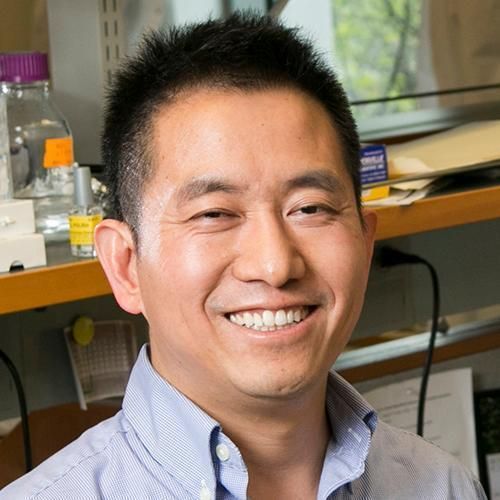Bacterially driven cadmium sulfide precipitation on porous membranes: Toward platforms for photocatalytic applications.
The emerging field of biofabrication capitalizes on nature's ability to create materials with a wide range of well-defined physical and electronic properties. Particularly, there is a current push to utilize programmed, self-organization of living cells for material fabrication. However, much research is still necessary at the interface of synthetic biology and materials engineering to make biofabrication a viable technique to develop functional devices. Here, the authors exploit the ability of Escherichia coli to contribute to material fabrication by designing and optimizing growth platforms to direct inorganic nanoparticle (NP) synthesis, specifically cadmium sulfide (CdS) NPs, onto porous polycarbonate membranes. Additionally, current, nonbiological, chemical synthesis methods for CdS NPs are typically energy intensive and use high concentrations of hazardous cadmium precursors. Using biosynthesis methods through microorganisms could potentially alleviate these issues by precipitating NPs with less energy and lower concentrations of toxic precursors. The authors adopted extracellular precipitation strategies to form CdS NPs on the membranes as bacterial/membrane composites and characterized them by spectroscopic and imaging methods, including energy dispersive spectroscopy, and scanning and transmission electron microscopy. This method allowed us to control the localization of NP precipitation throughout the layered bacterial/membrane composite, by varying the timing of the cadmium precursor addition. Additionally, the authors demonstrated the photodegradation of methyl orange using the CdS functionalized porous membranes, thus confirming the photocatalytic properties of these composites for eventual translation to device development. If combined with the genetically programmed self-organization of cells, this approach promises to directly pattern CdS nanostructures on solid supports.
Duke Scholars
Published In
DOI
EISSN
ISSN
Publication Date
Volume
Issue
Start / End Page
Related Subject Headings
- Sulfides
- Spectrum Analysis
- Nanoparticles
- Microscopy, Electron
- Membranes
- Escherichia coli
- Chemical Precipitation
- Cadmium Compounds
- Bioengineering
- 51 Physical sciences
Citation
Published In
DOI
EISSN
ISSN
Publication Date
Volume
Issue
Start / End Page
Related Subject Headings
- Sulfides
- Spectrum Analysis
- Nanoparticles
- Microscopy, Electron
- Membranes
- Escherichia coli
- Chemical Precipitation
- Cadmium Compounds
- Bioengineering
- 51 Physical sciences


